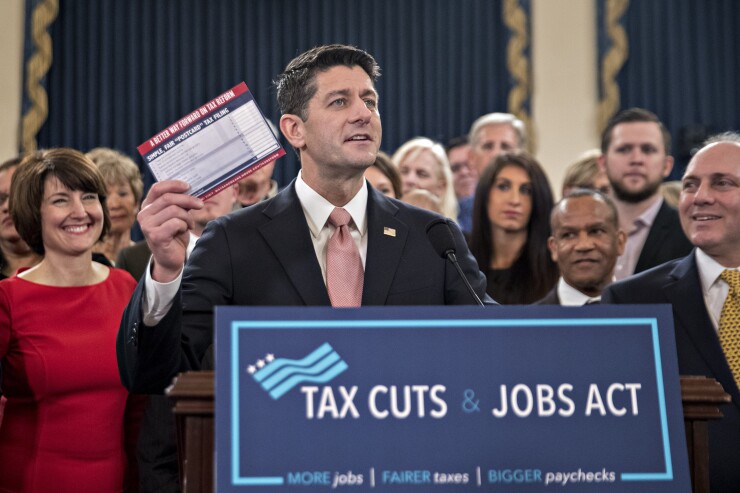We ended 2017 with pension plans in slightly better shape than they the year before. Strong market returns and larger-than-expected employer contributions, helped boost defined benefit
But now that 2018 has arrived, and with it, the passage of the Tax Cuts and Jobs Act, it’s time for defined benefit plan sponsors to take a close look at what the law could mean for defined benefit financing — not just now but also in the long run. And, plan sponsors need to consider how those funding decisions might impact their overall pension management strategies.

The timing of the Tax Cuts and Jobs Act presents many sponsors with an immediate opportunity to make a pension contribution in 2018 and obtain a deduction at the higher 2017 tax rate. For companies with a calendar year tax and plan year, they have until Sept. 15, 2018 to make this contribution decision. While this is an attractive incentive to speed up contributions, sponsors considering this option will need to give serious thought to how it will impact their broader pension financial management strategy. So how might sponsors evaluate their options during 2018? Here are four steps that can help guide the process:
1. Define your target. For any funding decision, it’s important for the sponsor to articulate their objective related to their desired funding level (i.e., what does “fully funded” mean?). Are there additional pension benefits to be earned by employees in the future? Is the plan frozen with an ultimate objective to eventually de-risk? Is the plan paying material PBGC premiums or operational costs? Is there a level of cushion that’s desired for future adverse events (market volatility, participant longevity or regulatory)?
2. Strike the right balance. For plans that are underfunded relative to a sponsor’s desired funding level, there’s a balance between how much of the underfunding will be addressed by sponsor contributions vs. future investment returns and interest rate conditions over a specified period of time. The economics of any pre-funding decision will depend on the sponsor’s perspective around future market conditions, the cost of carrying the pension debt (including PBGC premiums), and its internal hurdle rates for use of corporate cash.
Some sponsors may choose to stay the course; others may choose to use this as the opportunity to significantly change their strategy. Sponsors who are more pessimistic around future market conditions, who may be paying large PBGC premiums, or those who have a lower hurdle rate will tend to find pre-funding more attractive, and may find it more so given the short-term opportunity arising from tax reform.
3. Have a plan for what’s next. As a sponsor evaluates its pre-funding options, it’s important to consider what policy areas might change as a result of any funding. Many sponsors have an objective to reduce funded status risk when their plan’s funded status improves, either through an investment glide path policy, or a liability settlement transaction such as an annuity purchase. These types of changes will alter the financial impact of pre-funding by changing the pension cost reflected in corporate earnings or the outlook for pension contributions prospectively.
In addition to reflecting future changes in the financial analysis, sponsors should consider the implementation steps necessary for execution. A sponsor’s investment governance structure can significantly impact the timing necessary to approve and implement large-scale investment strategy changes. Sponsors who are interested in approaching the annuity purchase marketplace should consider their approach to insurer engagement and fiduciary support as that market continues to evolve.
4. Monitor activity. As discussed above, it remains to be seen whether tax reform spurs significant pension funding activity. As part of developing their response, sponsors should also consider broader marketplace and industry activity, as higher levels of activity can have implications for the execution of investment strategy changes or risk transfer projects. For example, sponsors continue to be interested in the annuity purchase market, and while the market has been strong to date, it could change quickly as the year progresses if demand increases.
What’s next?
The changes that may occur as a result of 2017’s events aren’t new — they’re part of a broader shift in the management and administration of defined benefit pension plans. The financial management of defined benefit plans will continue to be critical, especially as the status of certain plans (e.g., open, closed, frozen) evolve. Plan sponsors can take a minute to appreciate the bit of positive funding news offered in 2017, but will need to shift gears to take advantage of 2018’s opportunities.





